Tom Ingall sits behind the controls in one of Northern’s new driving simulators.
In this article:
Tom Ingall sits behind the controls in one of Northern’s new driving simulators.
In this article:
- Northern Trains is revolutionising driver training with immersive, hyper-realistic simulators that replicate real routes and conditions.
- The tech enables earlier hands-on learning, helping recruits transition smoothly from theory to real-world challenges.
- Full-motion and platform simulators for conductors are next, marking a major leap in UK rail training innovation.
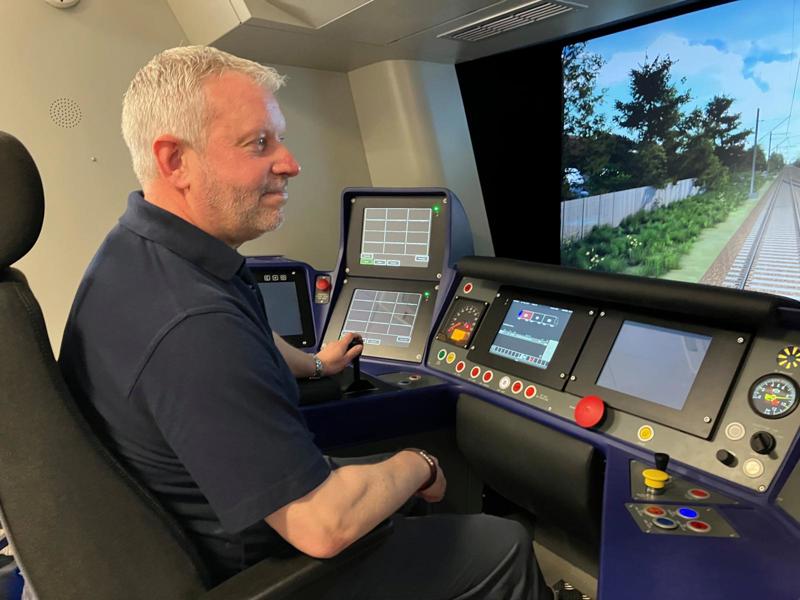
There’s a bustle of passengers on Skipton station platform. Clouds mottle a fine blue sky and ahead of me, the starter flicks from red to green.
I press the signal buzzer, sending two beeps to the conductor, switch off the driver’s reminder appliance, and pull back on the power/brake handle. Gently, the scenery starts to slip past and the speedometer climbs.
The fidelity of this simulator is extraordinary - for a moment I genuinely feel like I am on the move. All notion of the Leeds office block I am actually sitting in is forgotten.
However, overconfidence comes at a price. A few minutes later I totally misjudge the braking for the platforms at Cononley station and overshoot.
“We won’t stop here. Let’s call this one a semi-express,” wryly observes Dave Enderby, the Driver Training Manager for Northern Trains, standing over my shoulder and mentally discarding any future job application I may make.
I am sitting in a full-size cab with controls and displays laid out as they would be for a Class 331 electric unit, which can be seen on the Aire Valley line and on the other side of the Pennines between Liverpool and Blackpool.
Save for the obvious power differences, it’s very similar to the Class 195 diesel multiple unit. Both are built by Spanish manufacturer CAF to its ‘Civity’ design, which means crews can quickly become familiar with both.
The simulator impressively builds on this. A 30-second job switching one panel for another, and it takes on the characteristics of the diesel. It’s two trains in one.
Enderby is clearly delighted with this bit of kit: “It’s like the change from steam to diesel in the 1950s and 1960s. It’s seismic - a generational jump in terms of training drivers. It bridges the gap between theory and the real world that drivers have to face eventually.”
Northern is a prolific driver trainer. It takes on 150 recruits a year. Currently the process is largely “chalk and talk”, as Enderby succinctly puts it.
The intake can be diverse in age and background, but they all face more than three months in a classroom before they even get near to a cab for practical sessions. It takes around a year to pass out, once driving time and route learning is added on.
It’s envisioned that the simulator will bring a more blended approach, with newcomers able to start putting theory into practice from week one. Twenty-four have been ordered and will arrive in the coming two years, to be based at Northern’s training academies in Manchester and Leeds.
The one in which I am sitting is a prototype, almost ready to be deployed. Six hundred miles of line have been accurately replicated in the stack of computers which power it, although there is still some route building to complete.
If you’ve enjoyed the commercial simulators available for home computers and consoles, the principle is the same, but with much more detail (and of course the accurate physical cab environment).
For example, the in-cab CCTV displays all work, and the weather is tied in real time to the actual location. It really is a pleasant day in Skipton, as shown on screen.
Perhaps more significantly, the sounds are real. The ping of the Automatic Warning System (AWS), the bleep of the driver safety device and the noise of a passing train all feature. Acclimatisation to the noise of a cab can start sooner, rather than be a disorientation later.
Around the corner from the cab is another bank of screens. This simulator control station is manned by Dan Davison, a driver trainer with Northern.
More pertinently, he’s the subject matter expert on the training transformation project, on which he has worked for the two years since it began. He’s worked with the Polish software developers to make the simulation as accurate as possible.
“They have built simulators for other companies, but none in the UK. They have a base understanding, but our railways are completely different from their experience - for example, our signalling systems,” he explains.
On his monitors are a view of the cab interior, a view of what the driver is seeing, and a top-down satellite map with platforms, points and signals all overlaid.
It’s the centre screen which sets him up above mere mortals - and yes, even above a driver. With a nudge of a mouse, he can change the weather from clear to thick fog, add rain or snow, and even place hazards (large and small) on the track, selecting how much damage they might do to a train - including smashed windows and derailments.
“It’s almost endless,” Davison continues.
“Train faults, power line faults… at the minute there’s only a limited amount we can do with a real train on real tracks without causing disruption to the network.
“Here we can put a driver through single-line working, passing signals at danger, all re-created as many times as we want, so they can build their skills.
“When it comes to something happening in the real world, they are looking back on experience rather than pure knowledge.”
By way of example, with Enderby in the drivers’ seat, Davison selects a piano from a drop-down menu and drops it on the track a few hundred yards outside of Keighley. There’s a suitable musical crash as we plough into it.
More seriously, he can alter signals so that trainees learn which aspects are hard to sight, and drive accordingly. At the end of the run, a report card is generated for the new driver to see how they did.
“Every depot we train for will see at least one real route they are going to drive in real life,” says Davison.
“We currently have Leeds, Skipton and Ilkley, Newcastle, Morpeth and Hexham, Darlington to Bishop Auckland, and Doncaster and Hull, Sheffield and Barnsley.”
And the innovation doesn’t stop here. Six full-motion simulators are coming too. As it’s already immersive, these will surely step up the reality to the next level, providing a real sense of train movement and momentum.
There’s more work to do on these yet, and they will follow the 24 static half-cabs into service in the next few years.
Nor does Northern’s training transformation begin and end with the cab. Platform simulators with curved screens, which show the view along a station and replica doors which open and close, are coming for conductors.
Again, these will be able to show different weather and events. They will be the first of the type in this country, having previously been used in Japan.
Davison is keen to emphasise that already the technology should be regarded as a driving training device, rather than driver simulators: “Conductors work in cabs. They have to interact with the equipment, so there’s absolute benefits for them as well.”
The last word goes to Dave Enderby, my patient tutor: “We don’t want to stand still. We want to keep improving. The focus is on quality, to create better drivers. If we can get people more immersed in the art of driving a train, the theory, the rules, the regulations they also need to learn are much easier for them to process.”
Login to continue reading
Or register with RAIL to keep up-to-date with the latest news, insight and opinion.


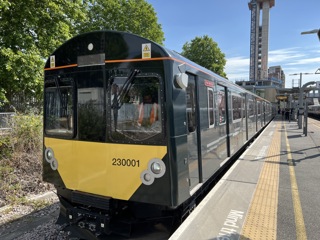
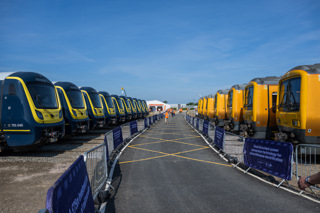
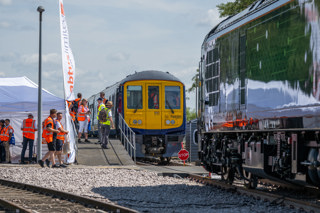
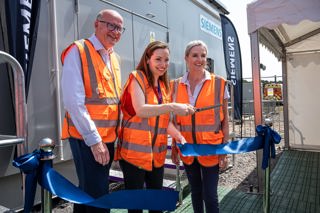
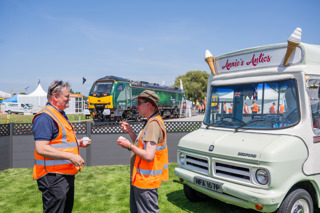











Login to comment
Comments
No comments have been made yet.